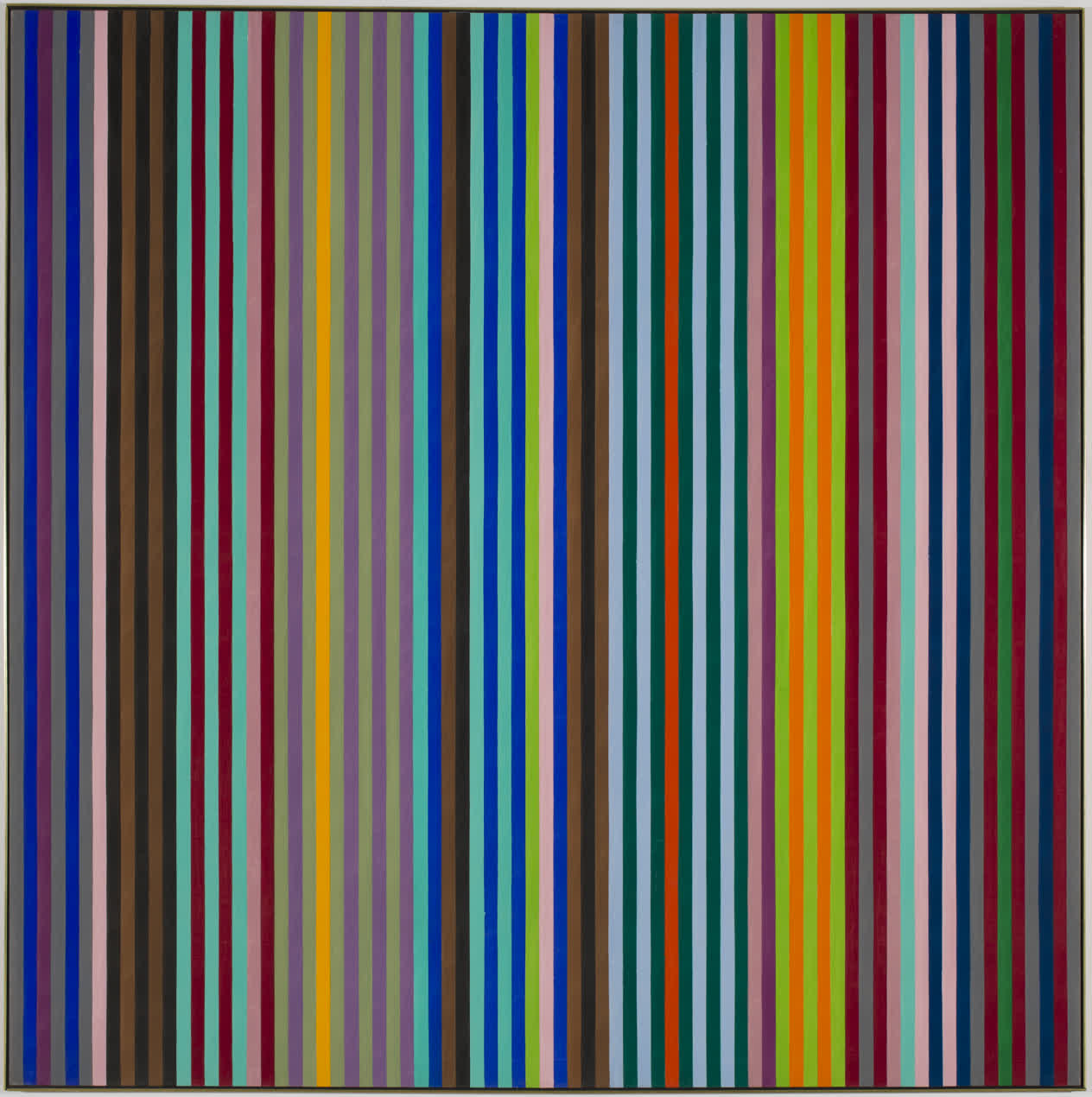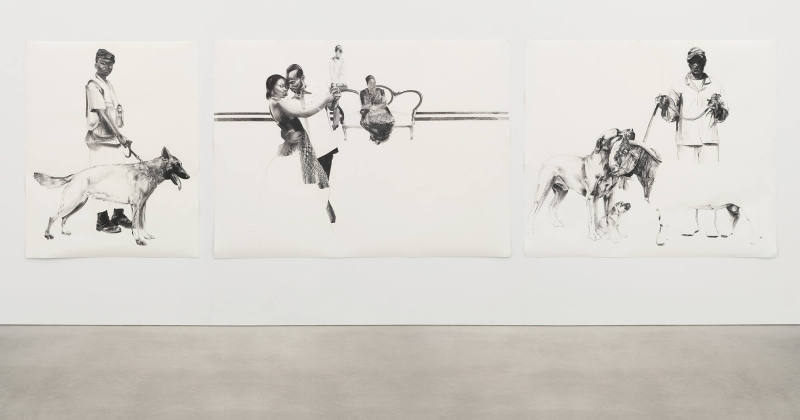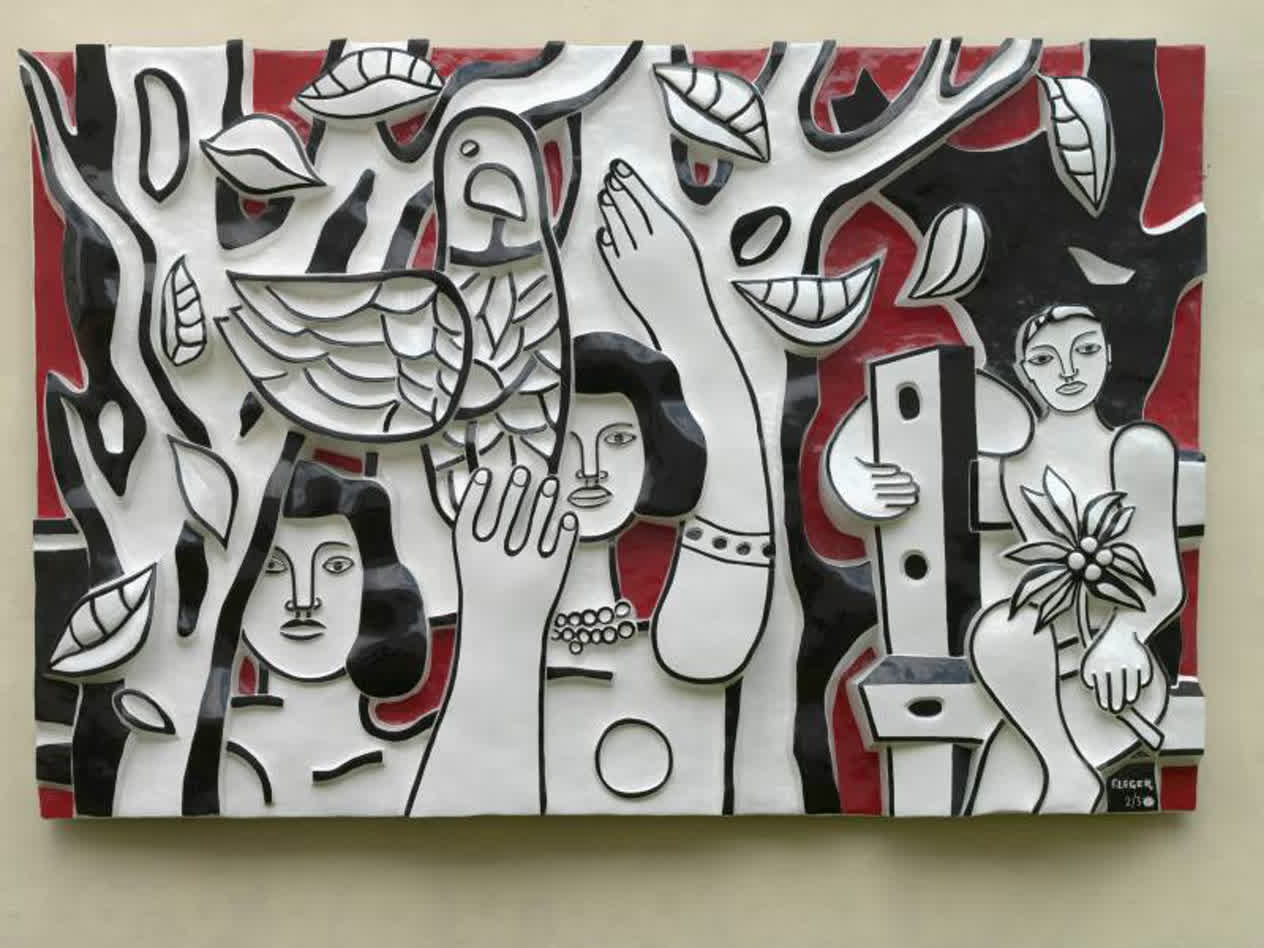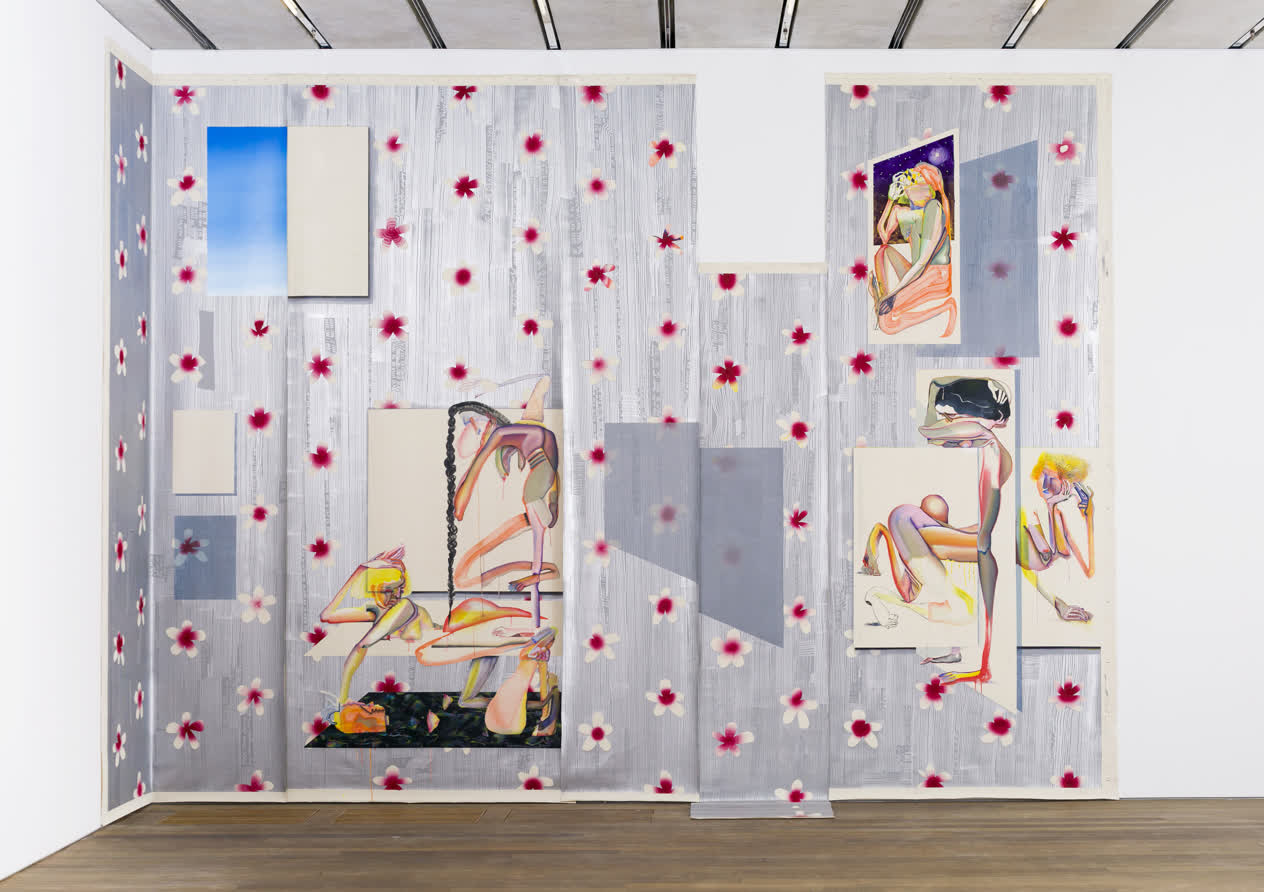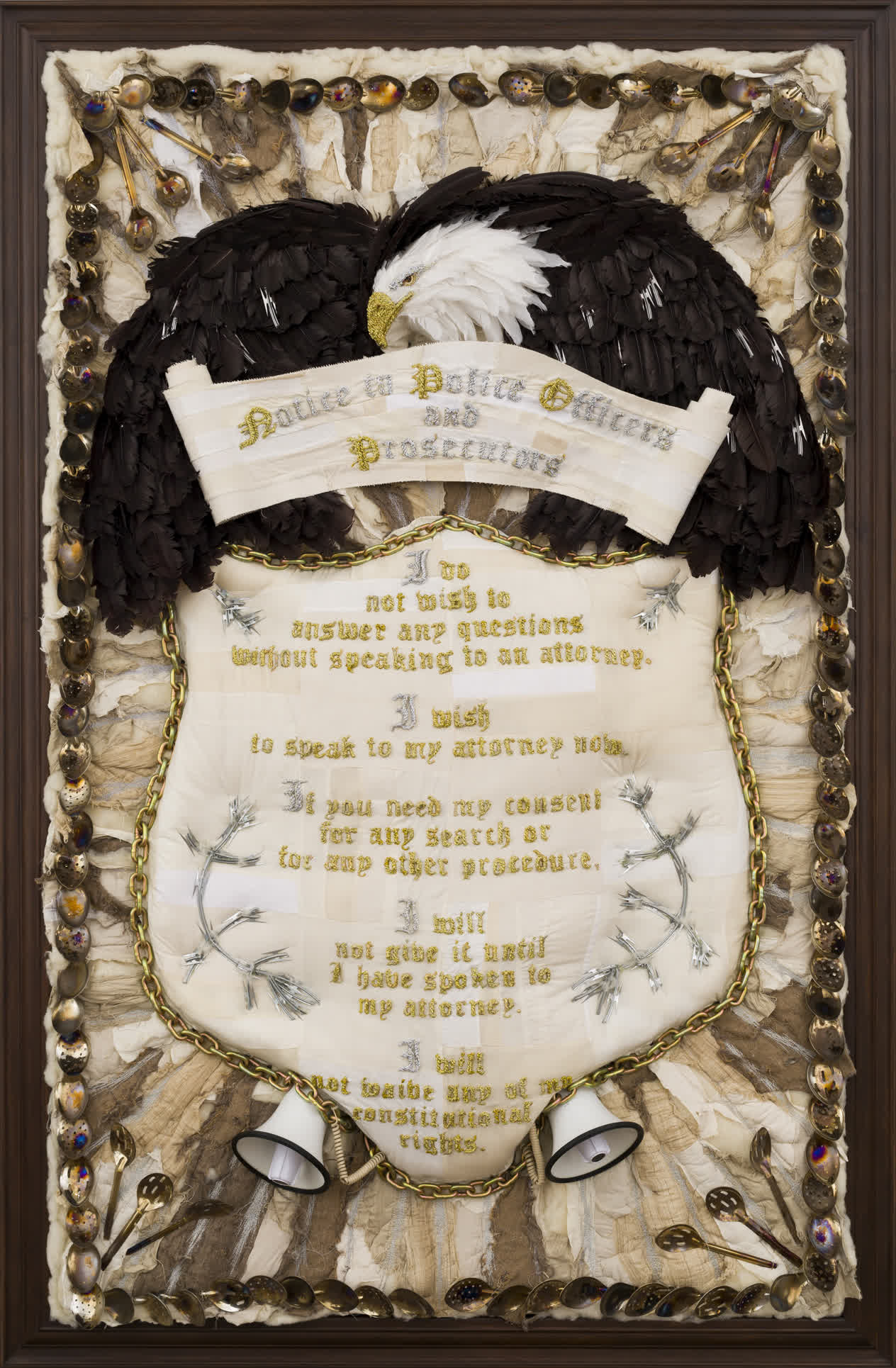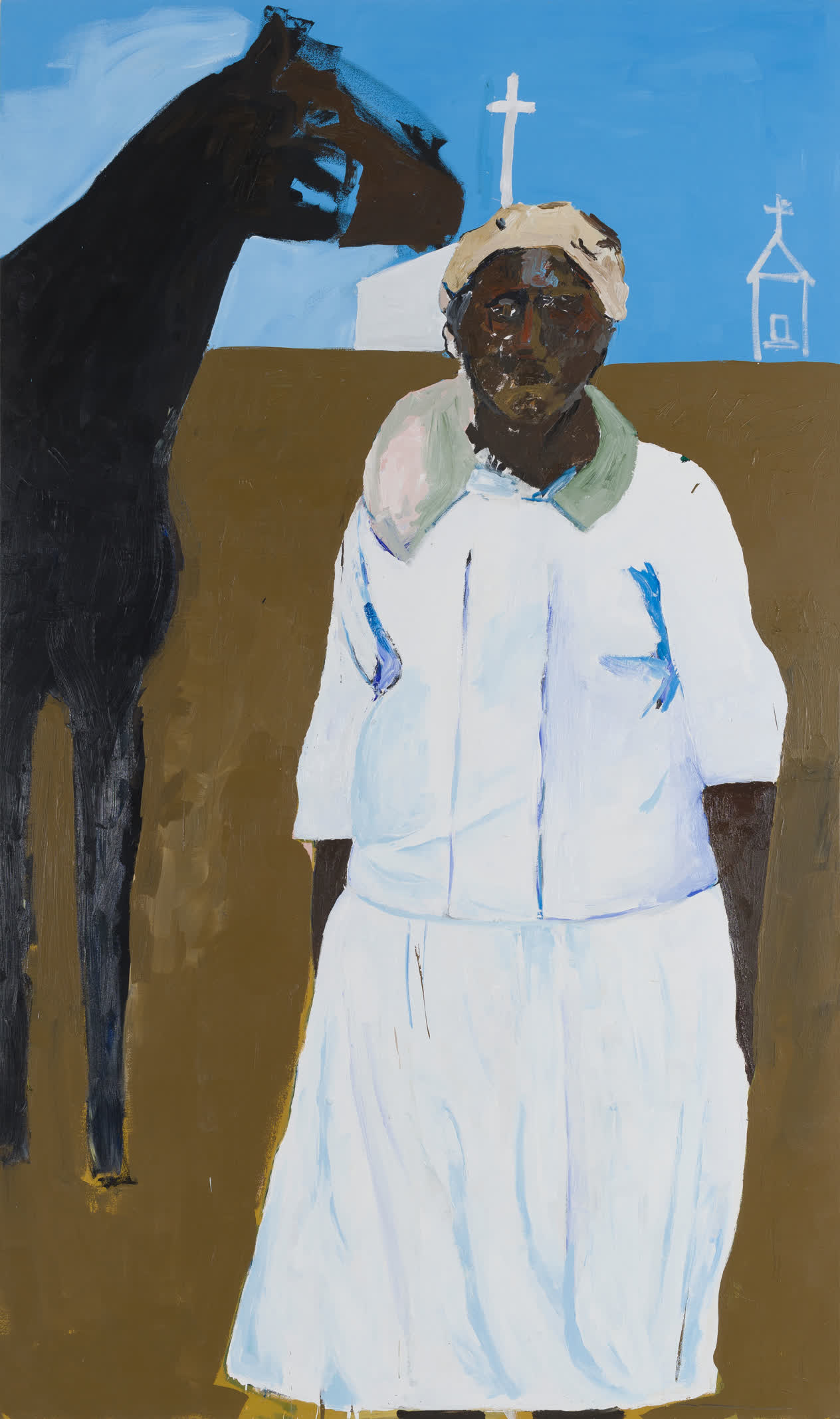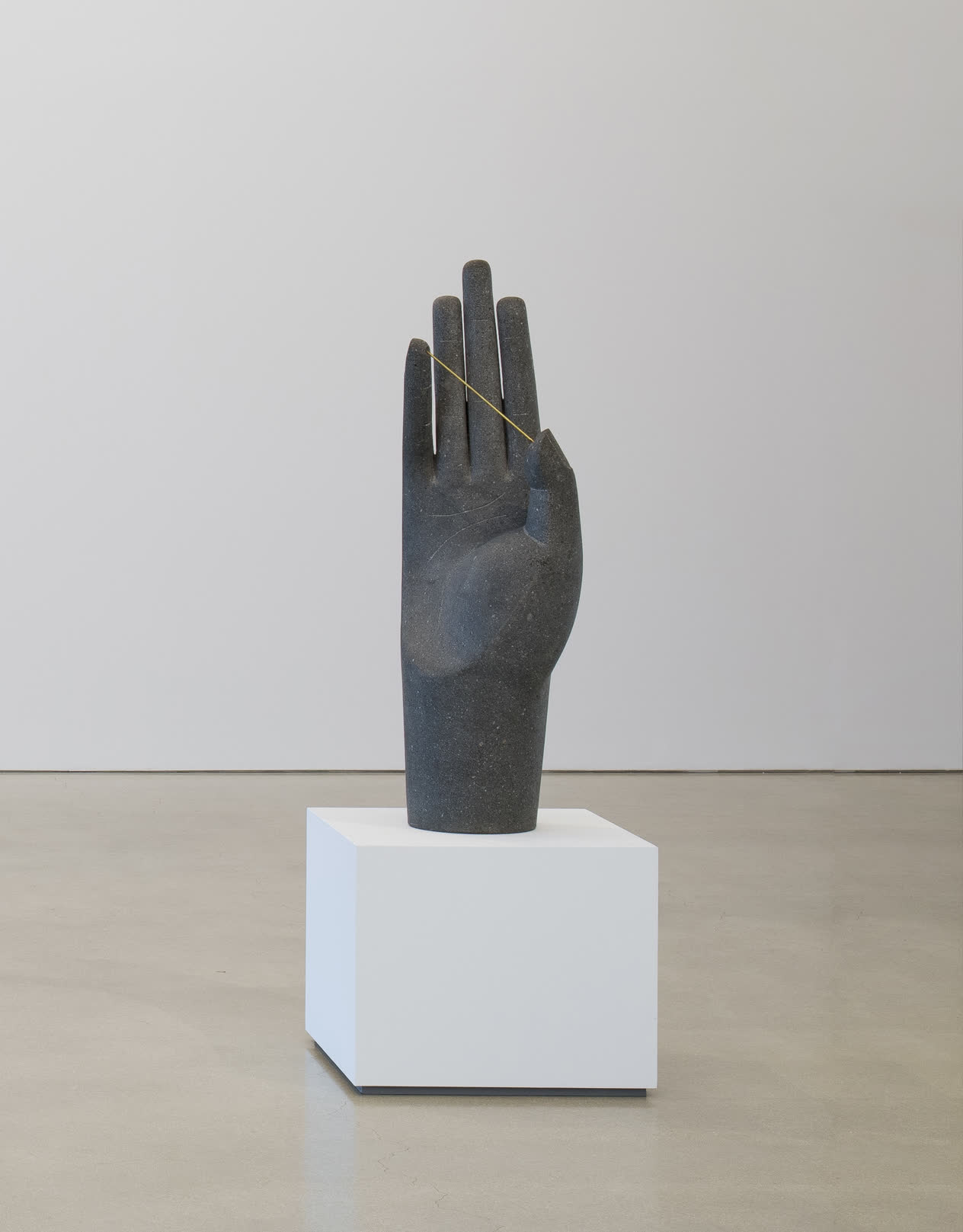Faith Ringgold Black Light Series #1: Big Black 1967
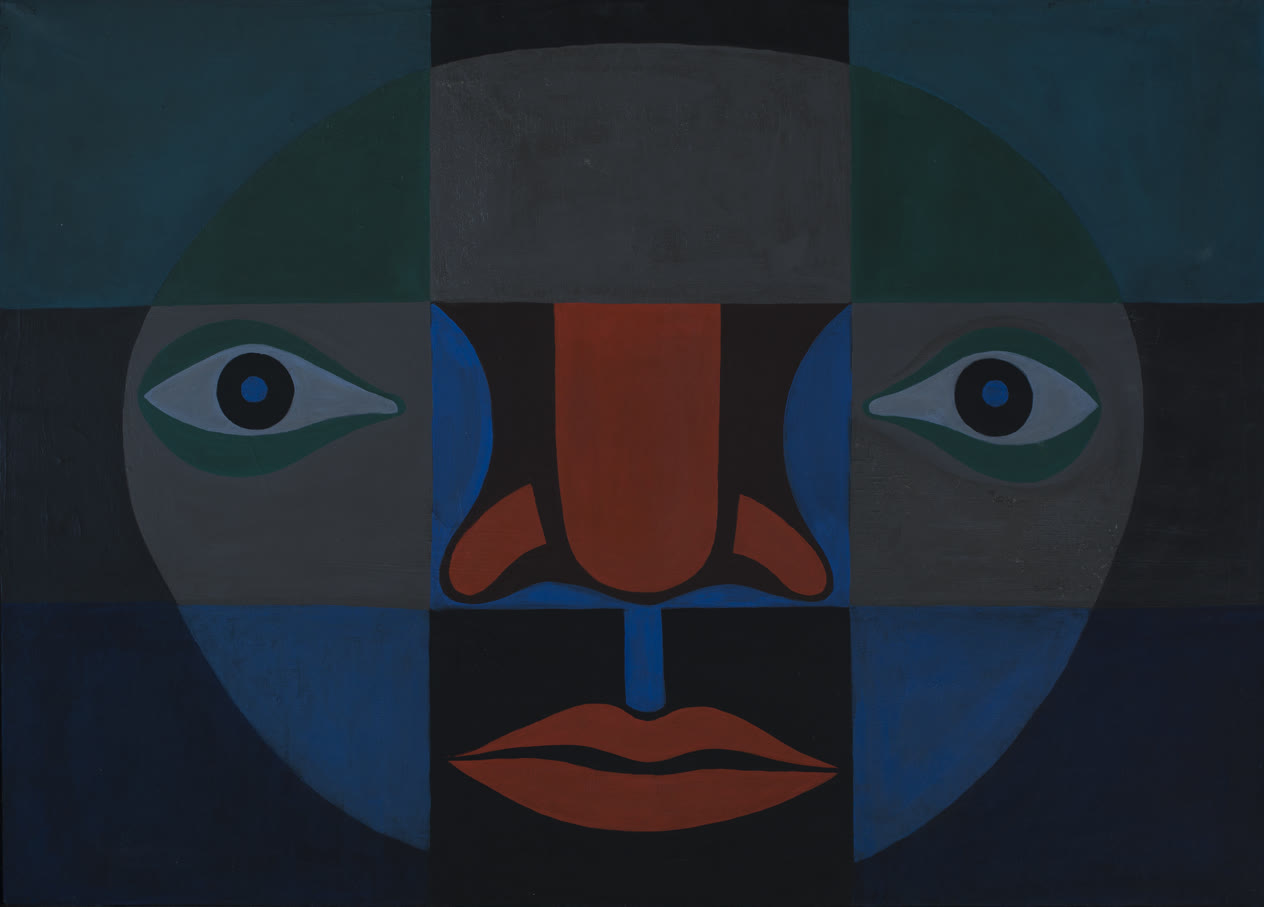
© 2022 Faith Ringgold / Artists Rights Society (ARS), New York, Courtesy ACA Galleries, New York

Big Black is the first in a series of works in which Faith Ringgold explores a dark palette that excludes the use of white paint. Deep blues, browns, reds, and grays compose a grid filled with geometric shapes that create a face. These forms and structures are influenced by the patterns and rhythms of African sculpture, textiles, and music. Created during a period in which slogans such as “black is beautiful” were prevalent, the painting speaks to expressions of self-love. Ringgold is also influenced by the work of painters Ad Reinhardt and Josef Albers, who both created dark and nearly monochromatic abstract images. In this way, Ringgold explores the relationship between abstraction, visibility, and Blackness in both their formal and social implications.
Identification
Title
Black Light Series #1: Big Black
Production Date
1967
Object Number
2013.52
Credit Line
Collection Pérez Art Museum Miami, museum purchase with funds provided by Jorge M. Pérez and the John S. and James L. Knight Foundation
Copyright
© 2022 Faith Ringgold / Artists Rights Society (ARS), New York, Courtesy ACA Galleries, New York
https://www.pamm.org/en/artwork/2013.52
Copy artwork link
Physical Qualities
Medium
Oil on canvas
Dimensions
30 1/4 x 42 1/8 inches
Visual Description
Black Light Series #1: Big Black by American artist Faith Ringgold is an oil painting on canvas. It measures thirty inches tall by forty-two inches wide and hangs in a landscape orientation. These dimensions equal two and a half feet tall by three and a half feet wide, the longer side running parallel to the floor.
The entire canvas is divided into a grid of nine rectangles, overlaid on a close up of a human face. The face is simplified to basic shapes and solid colors, and has a vertical line of symmetry. If the painting were folded down its center spine, both sides would line up near perfectly.
This grid is made up of three columns and rows, which interrupt and divide the features and colors of the symmetrical face. Overall, the colors of the painting are all darkened shades of green, blue, red, and grey. The face is wide and stretches across the canvas from left to right like an elongated oval. The face seemingly floats, with no other visible body part, above the dark, checkerboard-like background.
Starting at the upper left corner, the first rectangle in the three-by-three grid has a background of dark teal, with the curve of the head’s outline filling the lower right corner of this section of the painting in a dark shade of green. Moving right along the top row, the majority of the second rectangle is taken up by the forehead, painted in grey. The top of this rectangle features a thin strip of black paint as its background. On the upper right corner, the third and top right rectangle is a mirror image of the left corner. The teal and green repeat, with the curve of the head entering on its left, continuing from the forehead, curving gently downward to enter the middle row.
Continuing to the middle row, starting on the left, the fourth rectangle starts with a black background. Following the curved outline from the rectangle directly above, the face is once again painted in grey. The face bulges out slightly, creating a pronounced cheekbone. On this grey cheek is an eye, with green eyelids, a black iris, and blue pupil. The sclera, the typically white part of the eye, is painted in a light shade of grey.
Moving right along the middle band, the fifth and center rectangle of the painting features the nose. It is large and red and takes up nearly the entire rectangle. It contrasts sharply with the rectangles black background. It is shaped like a thumb held upside down, or like a wide red column with a rounded, semi-circular end pointing downward. The nostril flares project on either side of the nose like smaller versions of the central column shape, reaching for the left and right corners of the central rectangle. Around the edge of this center rectangle is blue frame that hugs the contours of the nose. The sixth and last rectangle on the right is a mirror image of the fourth rectangle, with a blue, black, grey, and green eye peering rightward.
In the bottom left corner, the seventh rectangle has a deep blue background that is interrupted by the gentle lighter shaded blue that makes up the face. The eighth, bottom middle rectangle has a closed mouth of two lips the same red shade as the nose. A thin blue column of paint rises from a small dip between the two halves of the upper lip, connecting the lips to the nose in the rectangle directly above it. There is no visible chin outline in this rectangle, as the red lips rest on a dark blue, almost black background. The lower right corner, and last rectangle of the nine, is again, a mirror of the blue rectangle in the bottom left corner.






